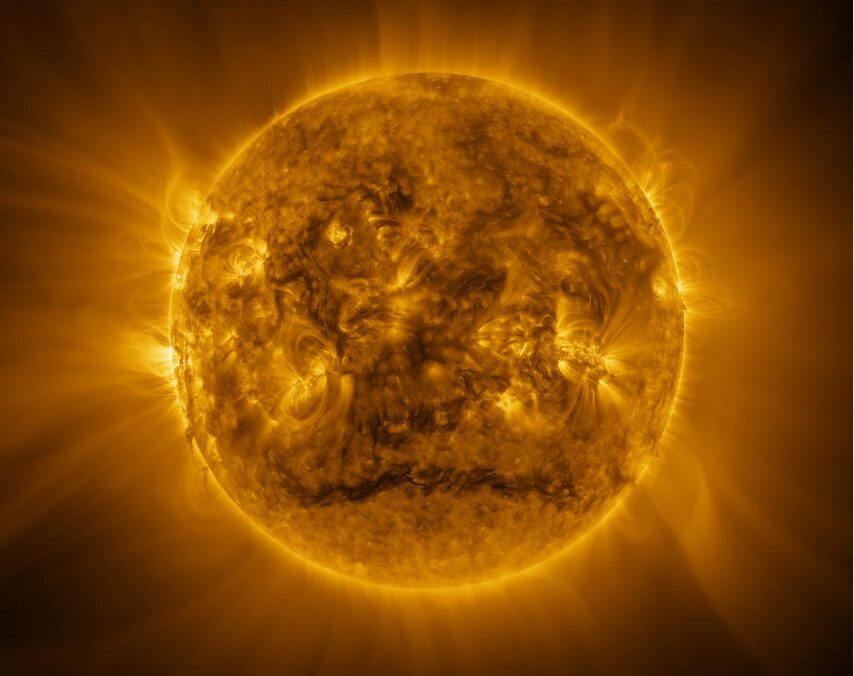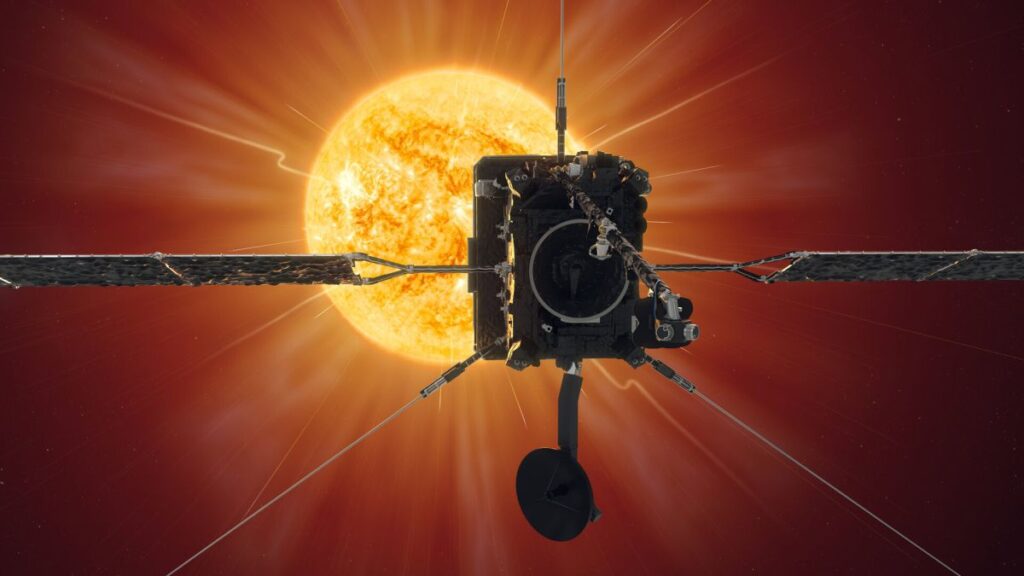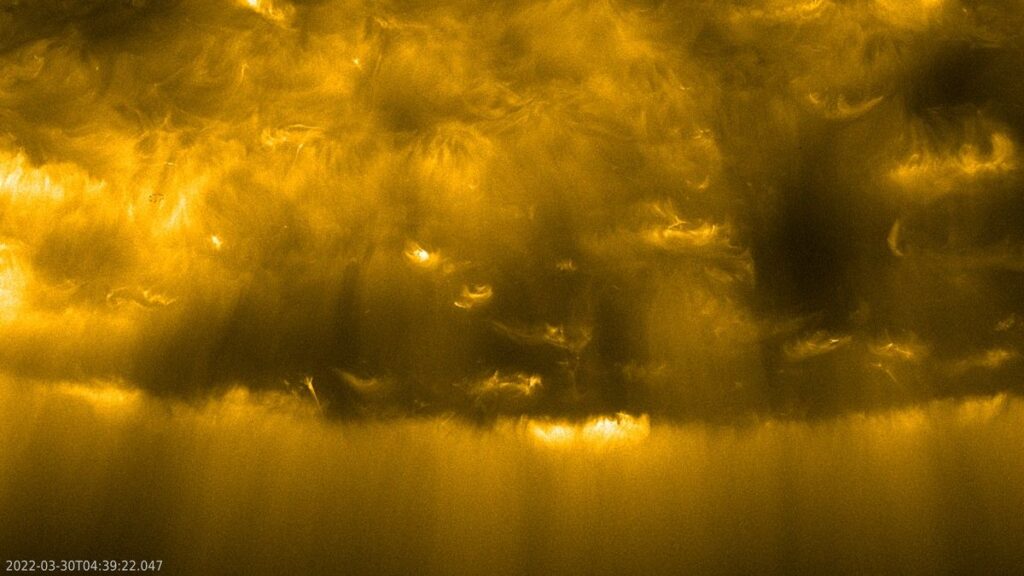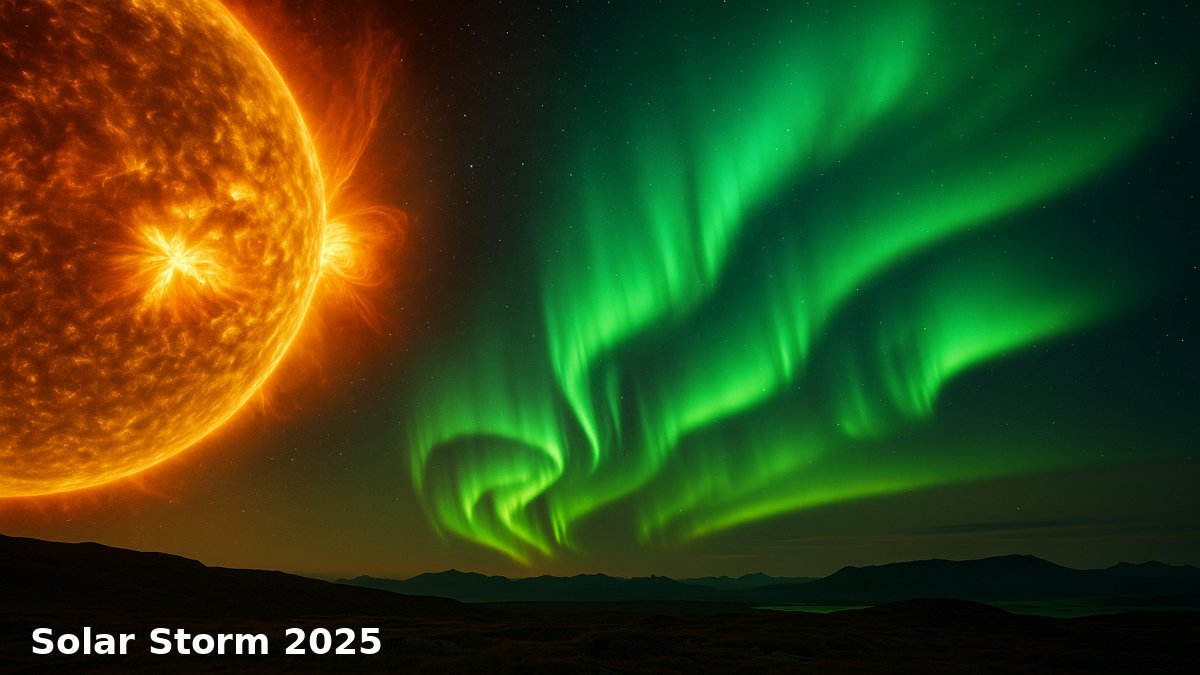
For the first time in history, NASA and ESA’s Solar Orbiter has captured a direct image of the Sun’s South Pole. On June 11, 2025, a great milestone for space exploration was achieved. For the first time in history, NASA and ESA’s Solar Orbiter mission has captured an image of the Sun’s south pole, which had previously been invisible to scientists for hundreds of years.
This rare and powerful image is more than just a photo, but could be a game-changer for our understanding of the Sun’s solar magnetic field, solar storms, and the background space weather that affects everyone on Earth every day.
🧭 Why the Sun’s South Pole Is So Important
The polar regions of the Sun especially the Sun’s South Pole are the equivalent of the command center of the Sun. It is believed that in its solar magnetic field reversals (which occur every 11 years during the solar cycle), the origin begins in the polar zones. The flips control:
- Sunspot activity
- Solar flare activity
- Velocity of solar winds
- Geomagnetic storms that disturb life on Earth
As we approach the solar cycle 2025, gazing directly at the Sun’s South Pole for the very first time represents a milestone in grasping these forceful forces. This entire southern pole was previously hidden — a simple reach beyond our capabilities
🆕 June 2025 Breakthrough: Sun’s South Pole Revealed Like Never Before
In June 2025, the European Space Agency (ESA) contributed to a milestone for humankind by obtaining the first-ever direct images of the Sun’s south pole.
The photos were obtained via the Solar Orbiter spacecraft, which essentially provided us with an unprecedented view of the Sun’s polar region, which had largely been unexplored.
The images show a chaotic patchwork of magnetic fields that have both north and south polarities intertwined. This confirmed that the Sun is approaching its next magnetic field polarity reversal, which occurs every eleven years.
The solar orbiter was equipped with powerful tools to scan for magnetic fields and plasma flows like PHI (Polarimetric and Helioseismic Imager) or EUI (Extreme Ultraviolet Imager)
Such discoveries will allow scientists to study new discoveries about solar wind origin, and/or to predict potentially harmful geomagnetic events in space like solar storms.
The Solar Orbiter is presently tilted at 17°, but by 2029, it will be in a 33° orbit which would dramatically aid scientists observations of the poles of the sun.
🔗 Official ESA Update: View the full discovery here
🛰️ NASA Solar Orbiter

The photo comes from NASA’s Solar Orbiter, especially innovative spacecraft developed by NASA and together with the European Space Agency (ESA). The Solar Orbiter mission was revolutionary and created a new class of spacecraft that can fly in a tilted orbit – something no other mission has done before. The uniqueness in Solar Orbiter’s tilted orbit allowed it to capture some rare and historic images, including realizing historic and normal views of the solar poles, included in one of ESA’s most significant sun discoveries.
Key Technologies Used:
- PHI (Polarimetric and Helioseismic Imager) — Measures the solar magnetic fields
- EUI (Extreme Ultraviolet, EUI) — Measures and captures the high resolution solar activity on its surface
- A heat-shielded shell, designed to block over hemispheric temperatures of 500 °C of solar intense heat energy
The capabilities of these instruments enabled Solar Orbiter to approach the closest proximity to the Sun yet – finally, images that have only been speculated by scientists since the dawn of active sun and solar science.
🧪What Scientists Discovered

According to NASA solar scientist Dr. Teresa Nieves-Chinchilla, the images reveal a surprising and odd magnetic patchwork at the Sun’s South Pole and has never been observed before – possibly suggesting unexpected magnetic field changes in the Sun and possible heliophysics breakthroughs.
Key Findings:
- odd magnetic inversions near the pole
- very unstable clustered regions of solar activity.
- A clearer view of how solar winds initiate at the poles
These findings could have huge impacts on solar flare prediction and are important to protect communication satellites, missions in space, and also could be used to protect electrical infrastructures on Earth from dangerous space weather events.
🌍 Why It Matters for Earth
This finding is not just beneficial to astronomy — it has an impact on daily living on Earth
Possible Benefits:
- Better prediction of Space Weather 2025
- Early warnings of geomagnetic storms
- Safer communications/satellite systems
- Better precision in GPS, increased Internet connectivity
As we emerge into a time of climate change and dependency on the global tech, understanding the Sun’s polar behavior will be an expectation of scientists in the not so distant future.
🔮 Future of Solar Observation
The Solar Orbiter is still on the hunt, and will be making ground-breaking flybys of the Sun until 2025 and 2026 to obtain an even greater depth of analysis of the Sun’s polar regions. NASA’s Parker Solar Probe is already flying in the outer corona of the Sun, which creates an incredible partnership opportunity. The objectives are to combine the datasets of both solar probe missions under the sun’s solar maximum behaviors of 2025.
Future Mission Objectives:
- Obtain high-resolution images of the Sun’s north pole before 2026
- Observe the dynamic changes and teraflare emissions during the peak of the solar cycle activity
- Provide a detailed map of the Sun’s surface magnetically in unprecedented detail.
These incredible missions illustrate what the future of solar observation can possibly provide in terms of entirely new insights of our star.
This isn’t the first time we’ve pushed the boundaries of space observation — learn how Elon Musk’s SpaceX Mars Mission 2026 aims to take us even farther into the cosmos.
Conclusion: A New Solar Chapter Begins
The first image of the Sun’s south pole is more than just a beautiful space photo – it is a significant advancement for space science! The image is revealing secret solar behavior, space weather, and more about the Earth’s destiny in a technology-dependent world. As we keep continuing to study the Sun, we are not studying a star – we are saving our home planet.
🔍 Frequently Asked Questions: Sun’s South Pole Image
Still curious? Here are some of the most common questions readers ask about the Sun’s mysterious South Pole — and what scientists are uncovering.
🌌 What is the significance of the Sun’s South Pole image captured in 2025?
This groundbreaking image offers scientists an unprecedented view of the Sun’s South Pole, helping refine solar magnetic field models and improving solar flare predictions.
🚀 How did the Solar Orbiter capture the Sun’s South Pole?
The ESA-NASA Solar Orbiter used Venus flybys to achieve a tilted orbit and leveraged instruments like PHI and EUI to capture detailed images of the Sun’s polar region.
🌞 Can this discovery help predict solar storms?
Absolutely. By understanding the magnetic dynamics at the Sun’s poles, scientists can improve solar storm forecasting, helping protect satellites, power grids, and astronauts.
🛰️ What is the Solar Orbiter mission and its goal?
Solar Orbiter is a mission led by ESA with NASA support, aimed at studying the Sun’s magnetic activity, polar behavior, and solar cycle to advance our understanding of heliophysics.
🧭 Will NASA capture the Sun’s North Pole too?
Yes. NASA and ESA plan to image the Sun’s North Pole by 2026 using the Solar Orbiter and Parker Solar Probe during the peak of Solar Maximum 2025.



